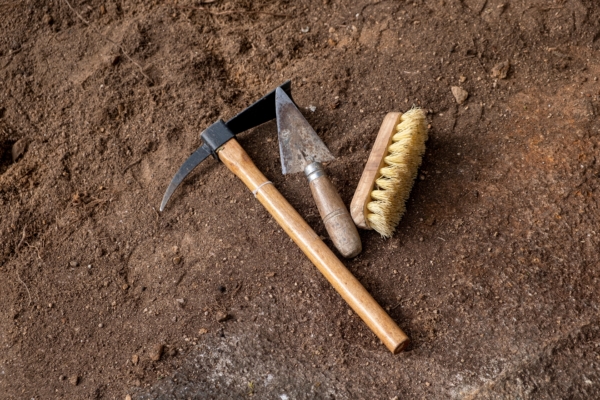A young archaeology student from the United States made her first excavation in northwestern England and made a surprising discovery of a rare medieval gold artifact within just 90 minutes. The find left her in disbelief and earned high praise from her supervising professor.
Newcastle University in the United Kingdom announced in a press release on August 11 that Yara Souza, an international student, unearthed a rare 9th-century gold object during her initial archaeological dig in Northumberland in July.
This excavation followed in the footsteps of metal detector specialist Alan Gray, who had serendipitously found similar items at the same location in 2021.
Hailing from Florida, United States, Souza is a member of the university’s archaeology team. She worked alongside classmates in the archaeology bachelor’s degree program and professional archaeologists from North East Museums to conduct further investigations at the site.
Expressing her excitement at finding the treasure in such a short time, Souza exclaimed, “I can’t believe I found something so quickly on my first dig.”
Having missed out on another archaeological dig last year due to illness, Souza finally fulfilled her wish this year. She enthused, “Discovering something unseen for over a thousand years is truly amazing, and I’m incredibly excited about it!”
The discovery site of these two items is near Dere Street, a Roman Empire main road connecting York and Edinburgh that continued in use long after the empire’s fall and eventually became part of the modern A68 highway.
The newly discovered gold artifact by Souza measures approximately 4 centimeters long with a decorative pointed tip at one end. Gold held a prestigious status at the time, reserved for the elite. Given Dere Street’s connection between religious centers Jedburgh and Hexham, experts involved in the excavation speculate that these two gold items may have had religious or ritual purposes.
Regarding Souza’s latest find, James Gerrard, Roman archaeology professor at Newcastle University and Souza’s mentor, described it as an exciting and high-quality discovery. He expressed his delight that Souza unearthed such an item early in her archaeological career.
Gerrard stated, “We know that Dere Street remained a major thoroughfare long after the Romans, and from this find, it’s clear that it was used by individuals of high status. These two artifacts may have been deliberately buried.”
Archaeologists will conduct further analysis on these two artifacts with the hope of eventually exhibiting them at the Great North Museum: Hancock.

